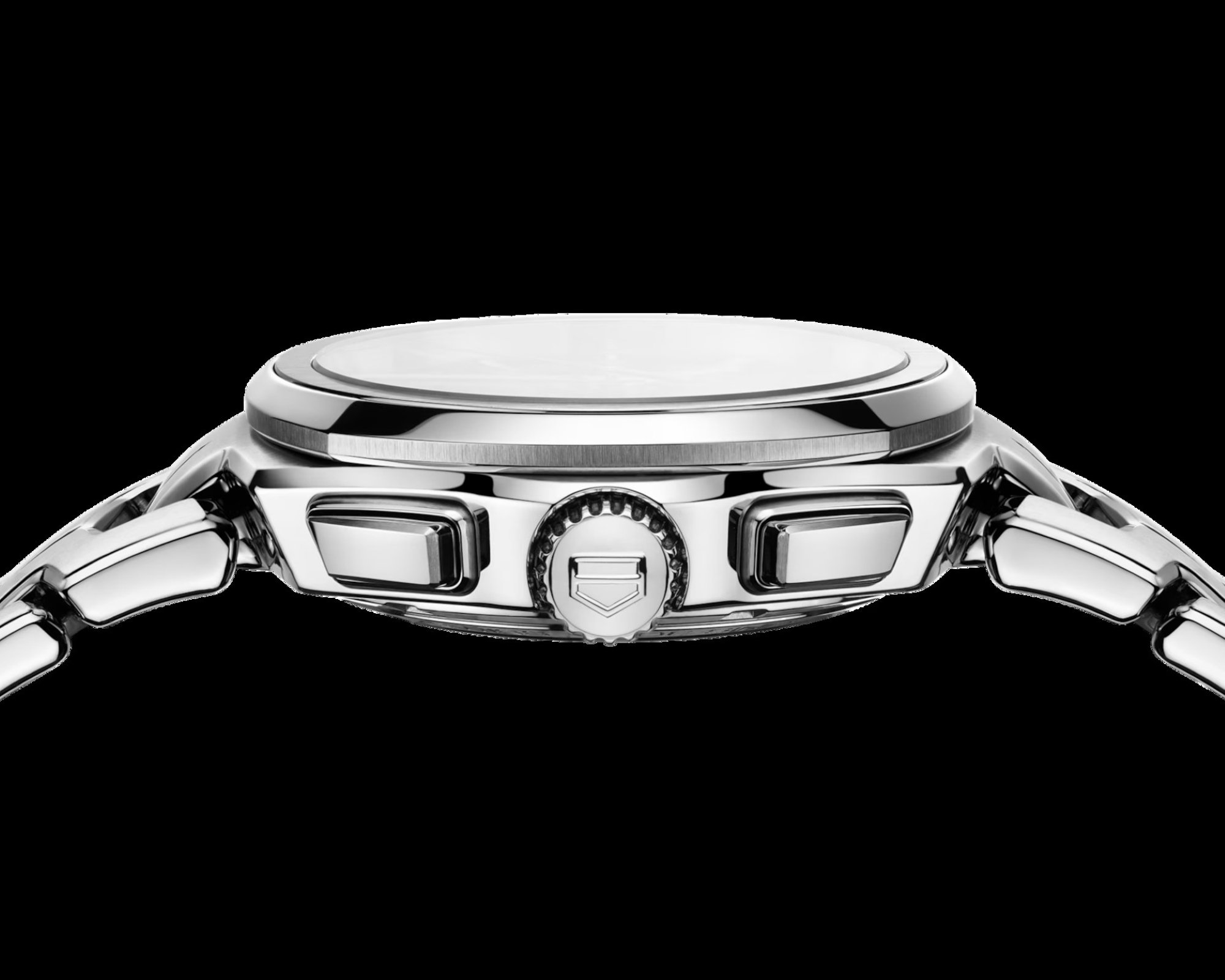With the modern catalogue spearheaded by iconic timepieces like the Carrera and the Monaco, TAG Heuer’s Link, by contrast, feels like the brand’s ‘black sheep.’ But how did this happen, and is there still a place for this odd one out?
This article is written in collaboration with TAG Heuer
TAG Heuer is a brand many of us are already familiar with, even just in passing. The Swiss company’s 165-year tenure has seen some of the most horologically, historically, and culturally significant timepieces of their eras. From motorsport icons like the Carrera and Monaco to contemporary lines such as the Aquaracer and Formula One, every collection in the TAG Heuer catalogue has left an indelible and recognisable mark on the industry.
Related Reading: Brand Essentials – Tales From TAG Heuer
Yet among this impressive roster lies another collection: the TAG Heuer Link, a watch that emerged during the brand’s transitional years but has since withdrawn to the shadows. So, what led to the creation of the Link? Why has it not enjoyed the same recognition today? And what might possibly bring it back into the spotlight?
A Link To The Past
Christmas Day, 1969: Rumblings from Japan. No, it wasn’t a killer dinosaur approaching from the depths, but instead the triumphs of Seiko. They had just developed and released a new collection, called the Astron. But it wasn’t just any old watch – the Astron was the first quartz timepiece ever made. This is what began a period of upheaval called ‘The Quartz Crisis.’
It may not have been a big deal to the average consumer; The idea of a super-accurate timepiece that cost little more than a fancy dinner was a dream come true. To the Swiss watch industry, however, it was a nightmare. By 1983, the industry’s 1,600-strong watchmakers had been cut down to just 600, and innumerable Swiss brands once regarded for their timekeeping capabilities had to eventually close their doors.
Advertisement, Heuer-Leonidas Easy Rider, 1970s
At the height of the Quartz Crisis, Heuer (then Heuer-Leonidas) were doing their absolute best to combat the devastation wrought upon the Swiss watch market. Models like the Easy Rider were cost-effective alternatives to the quartz watch, but fundamentally flawed.
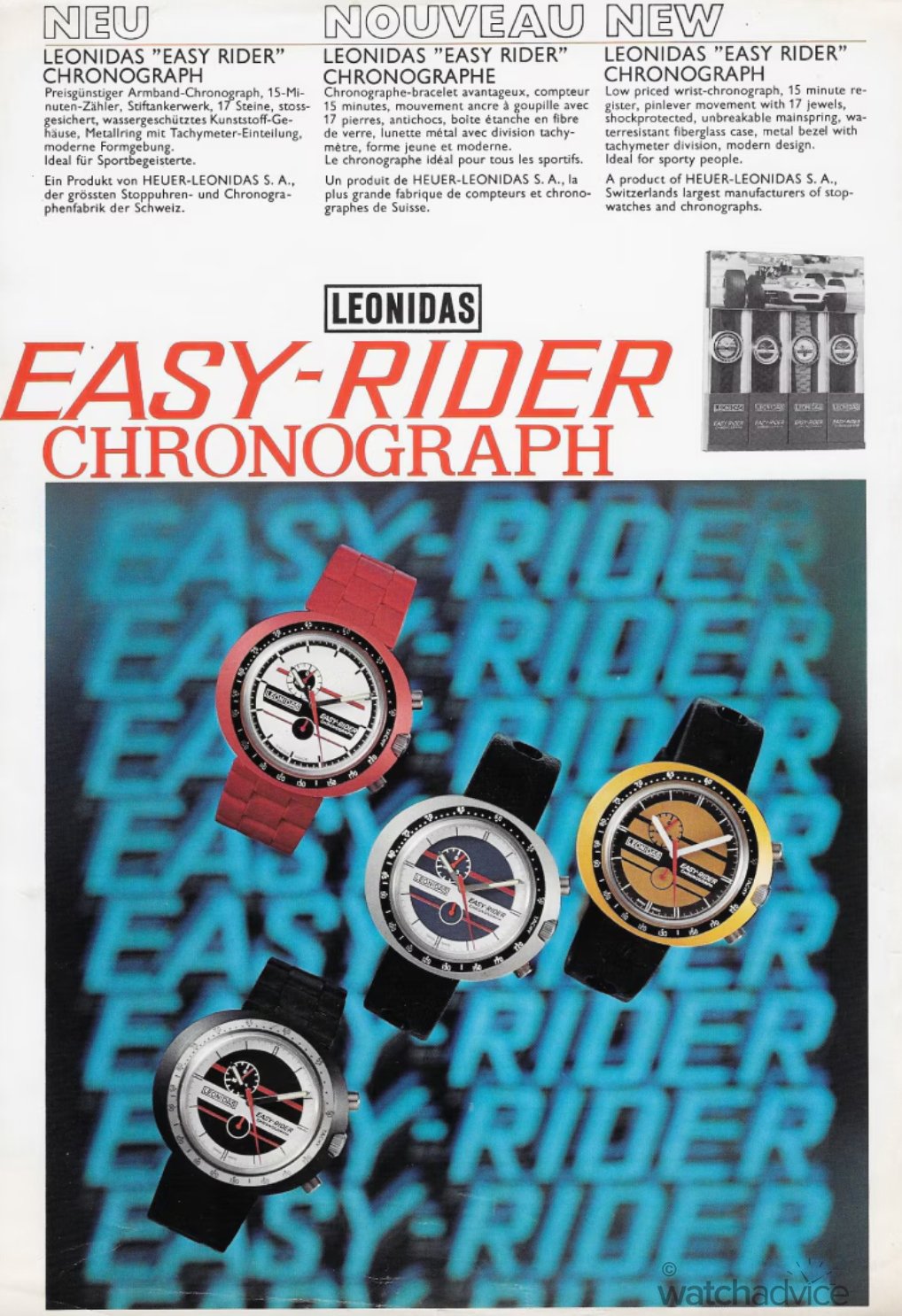
Heuer was but one of those brands caught in the crossfire. Though they survived major critical points throughout the Crisis, they came out looking like a shadow of their former selves. The influence they had held over the watch world, which at that point spanned over a century, threatened to come to an end. Techniques d’Avant-Garde, however, had a different idea; In 1985, they would buy out the struggling company, and the two names would merge and be reborn as TAG Heuer.
This is where the story of the Link begins – though not under that name. Two years after TAG’s acquisition, in 1987, the brand debuted the S/El: their second quartz-only line (but later evolved with automatic models) following the 1986 release of the Formula One collection. An abbreviated portmanteau of ‘Sport/Elegance,’ the designer responsible was Eddy Schöpfer, a TAG Heuer regular who also designed the 1500 and 2000 series and later collaborated with Breitling.
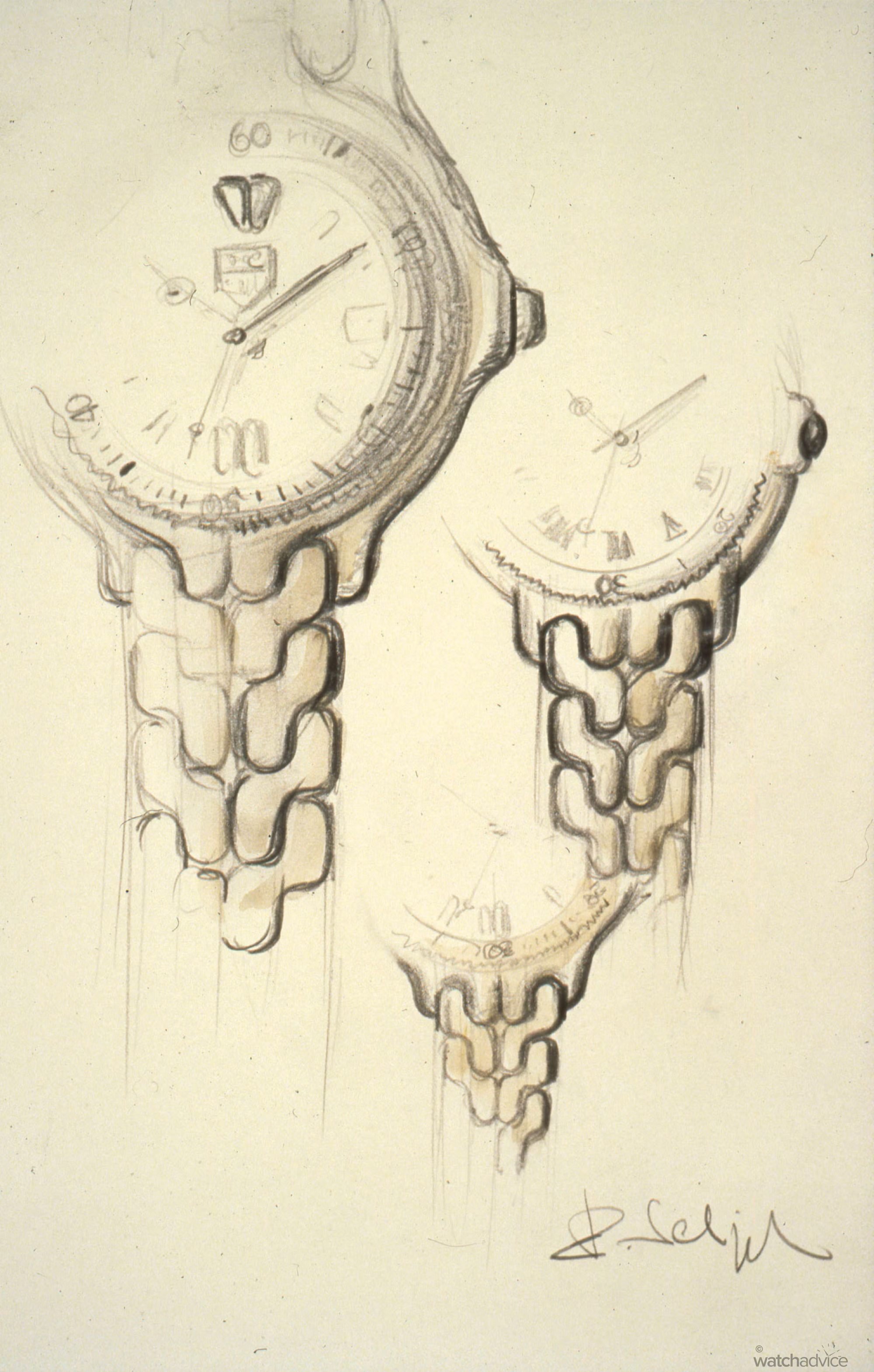
Early Sketches of the TAG Heuer S/El by Eddy Schöpfer, 1980s
Much of Schöpfer’s original design made it into the final production model of the S/El. Even from these unfinished sketches, the iconic S-Link was one of the first design elements considered.
The S/El was positioned as a ‘premium’ timepiece in a sea of ordinary quartz watches and was far more recognisable than many of its contemporaries. Schöpfer’s defining design feature was the link system, comprising of back-to-back rounded S-shaped ingots integrated seamlessly into the equally curvaceous lugs. These rounded, almost organic details stood in sharp contrast to the watch’s robust knurled diving bezel and pared-back dial layout.
Together, they produced a piece that looked both like a professional diving instrument and an almost living extension of the wearer. Marketing materials from the time leaned into this duality, emphasising that the S/El could be worn just as confidently and comfortably with a diving suit as with a dinner jacket.
Full-Colour Sketch of the TAG Heuer S/El by Eddy Schöpfer, 1986
One of the most popular models of the time was the two-tone steel and gold rendition of the S/El. The two-tone trend was evocative of late ’80s and ’90s watchmaking, having apparently been started by Cartier with the Santos line.
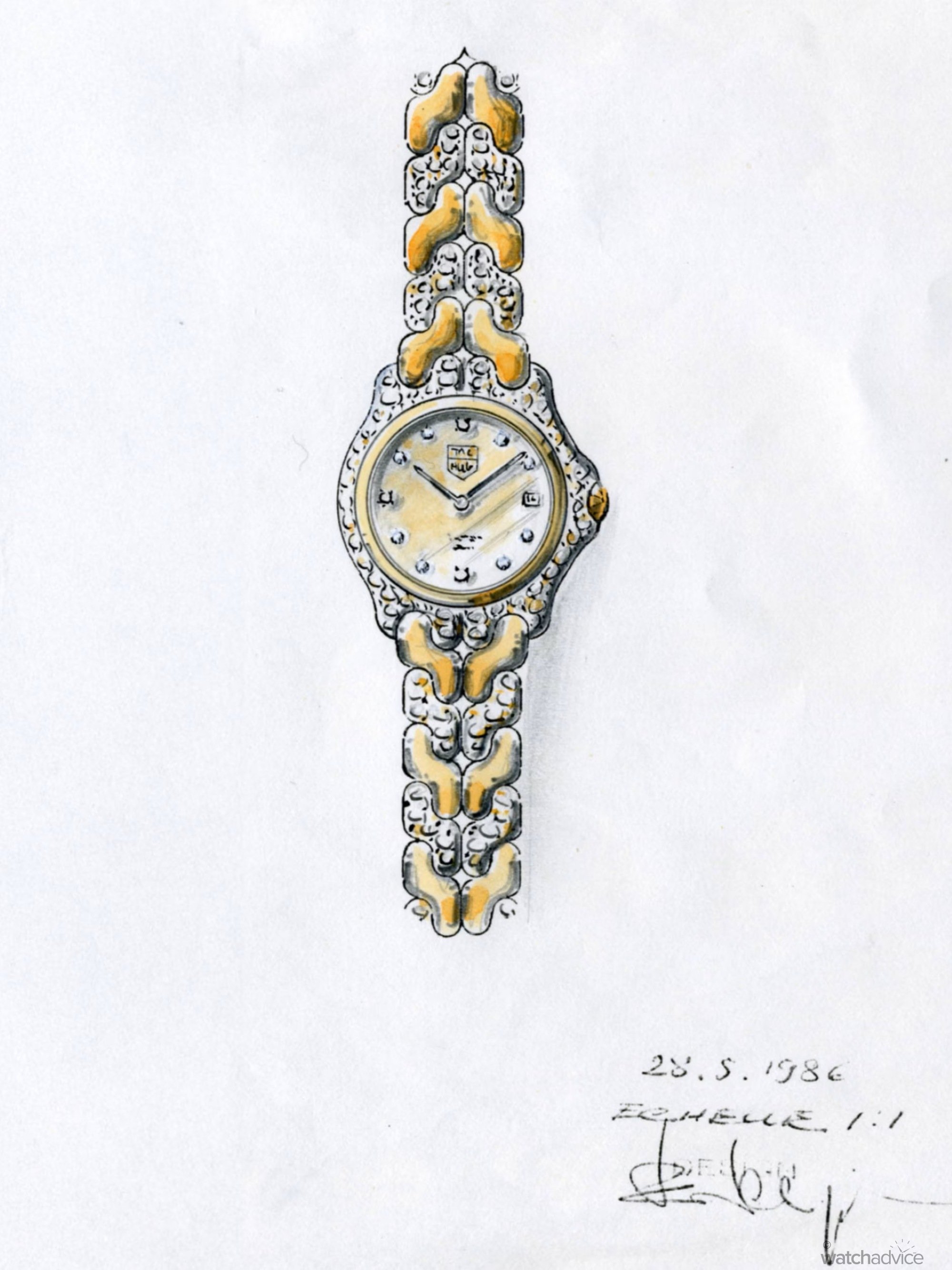
Blending such a refined design language with the traditional practicality of a dive watch was certainly a risk. It drew its share of public scrutiny and criticism, particularly when compared with the Heuers of old. Yet ultimately, it succeeded. For the next twelve years, the TAG Heuer S/El became a dominant mainstay of the catalogue. Seven different model lines and countless references were produced using Schöpfer’s design, the most notable of which was Reference S25.706C.
Colloquially known as the S/El Split Seconds Chronograph, this model combined analogue-digital (Ana-Digi) functionality with a rattrapante (split-seconds) chronograph and 1/100th-second accuracy. Despite its technical focus, it still maintained an elegant presence with its eggshell dial, leather strap, and two-tone steel-and-gold-plated construction. This watch was famously favoured by Brazilian Formula One icon Ayrton Senna throughout the early 1990s, right up until his tragic accident, with numerous photographs capturing him wearing the piece.
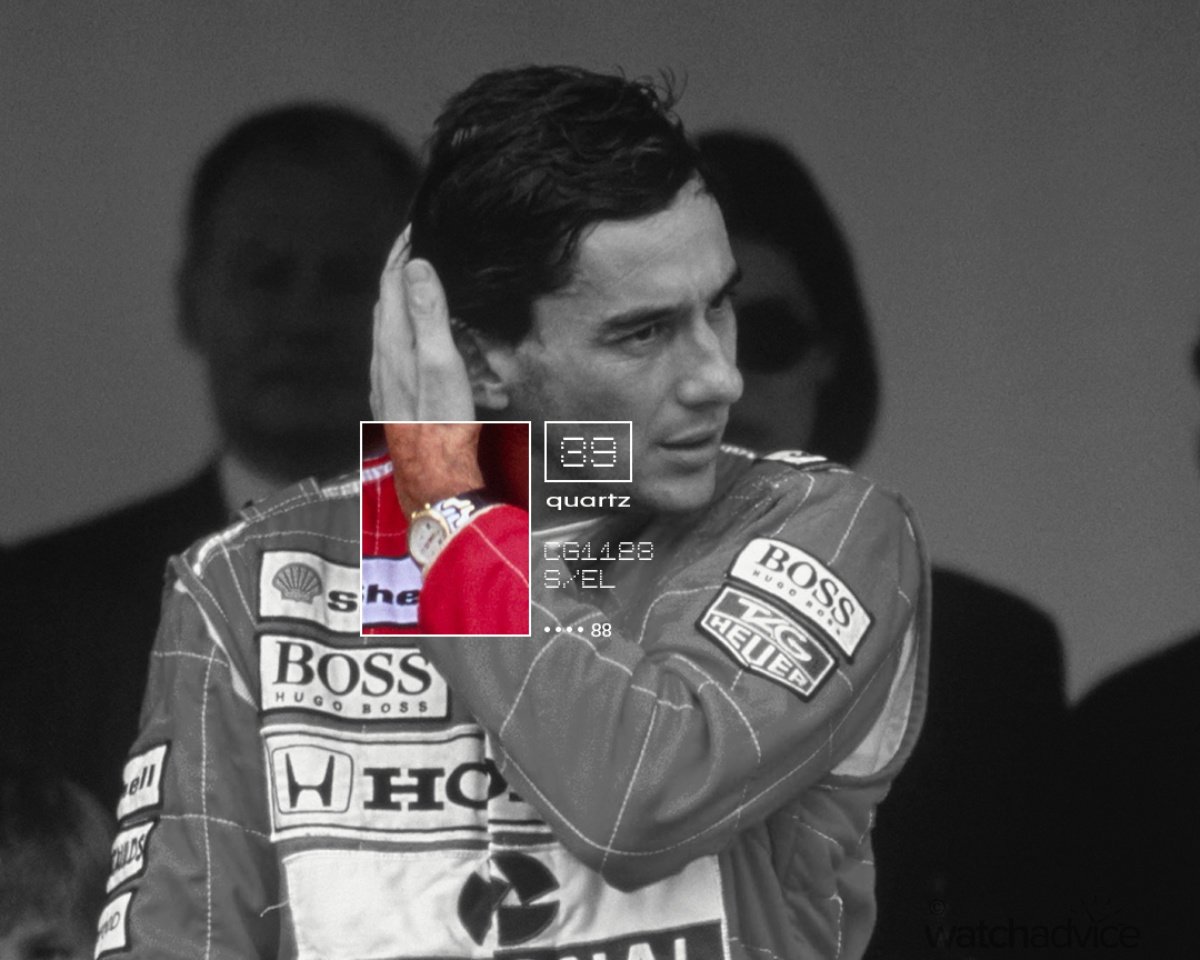
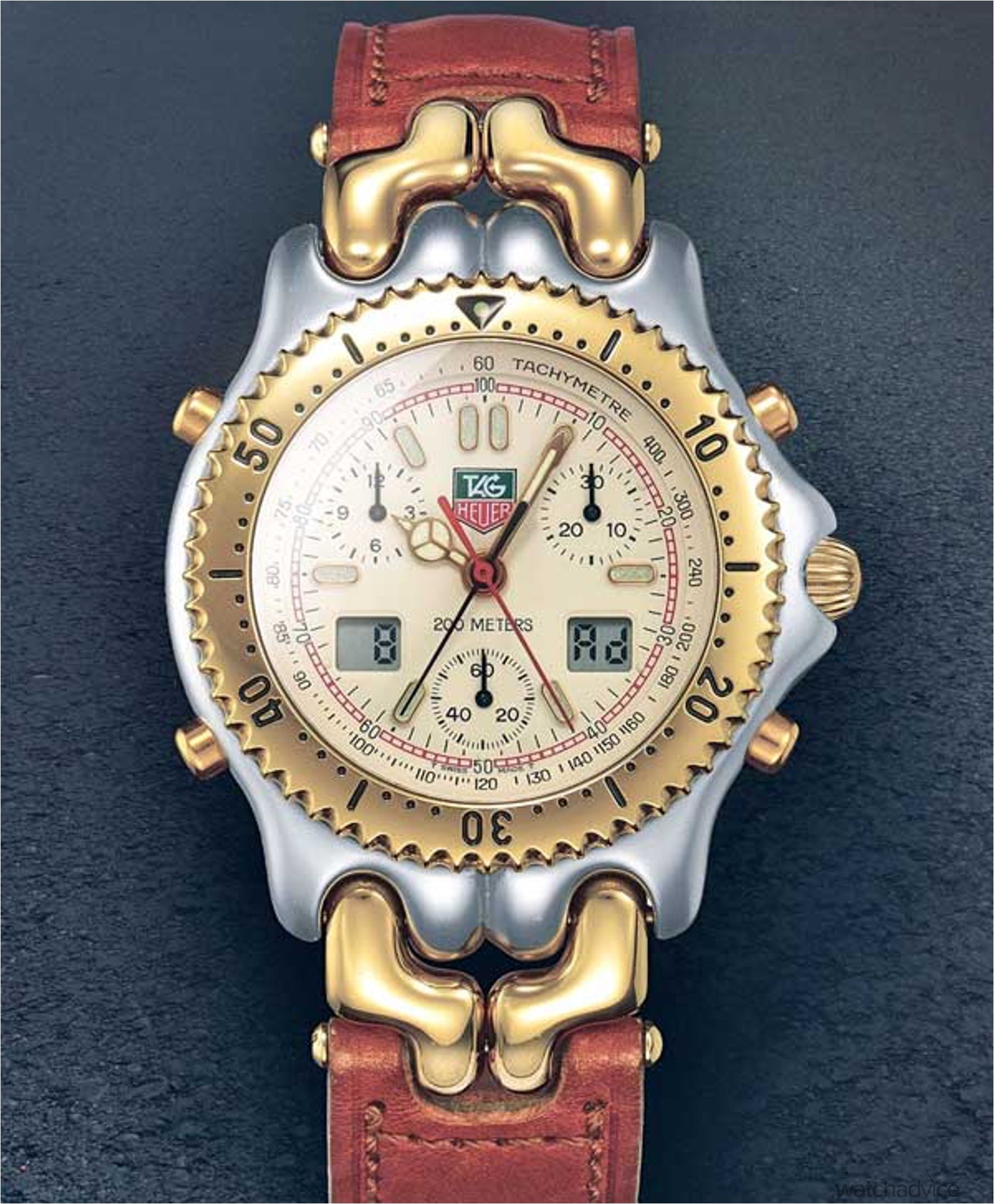
In 1999, the saga of the S/El concluded when it was discontinued in synchronicity with TAG Heuer’s acquisition by luxury giant LVMH. However, while it had departed in an official capacity, it did not spell the end, as the Link line emerged from its ashes. When it came time for the S/El to be revived, the ‘Link’ rename felt fitting: It paid tribute to the iconic design feature pioneered by Schöpfer years earlier, while retaining the same versatile intention.
The rounded, pebble-like case and bracelet of the S/El were streamlined and flattened, while the crown and guards were reworked with a more robust, contemporary aesthetic. The classic Mercedes hands were replaced with sword hands, and the overall design better aligned with the sensibilities of the 21st century. And once again, the Link occupied that perfect middle ground between the dive and dress watch subgenres, now with a refreshed look and feel.
Over time, the Link thrived in this role, with TAG Heuer pouring significant resources into the collection. From GMTs and chronographs to ladies’ models, special editions with then-ambassador Tiger Woods, and even the remarkable Calibre S – if you could name a complication, the Link likely had it. This ambitious push saw the Link become the face of the TAG Heuer catalogue throughout much of the 2000s and 2010s.
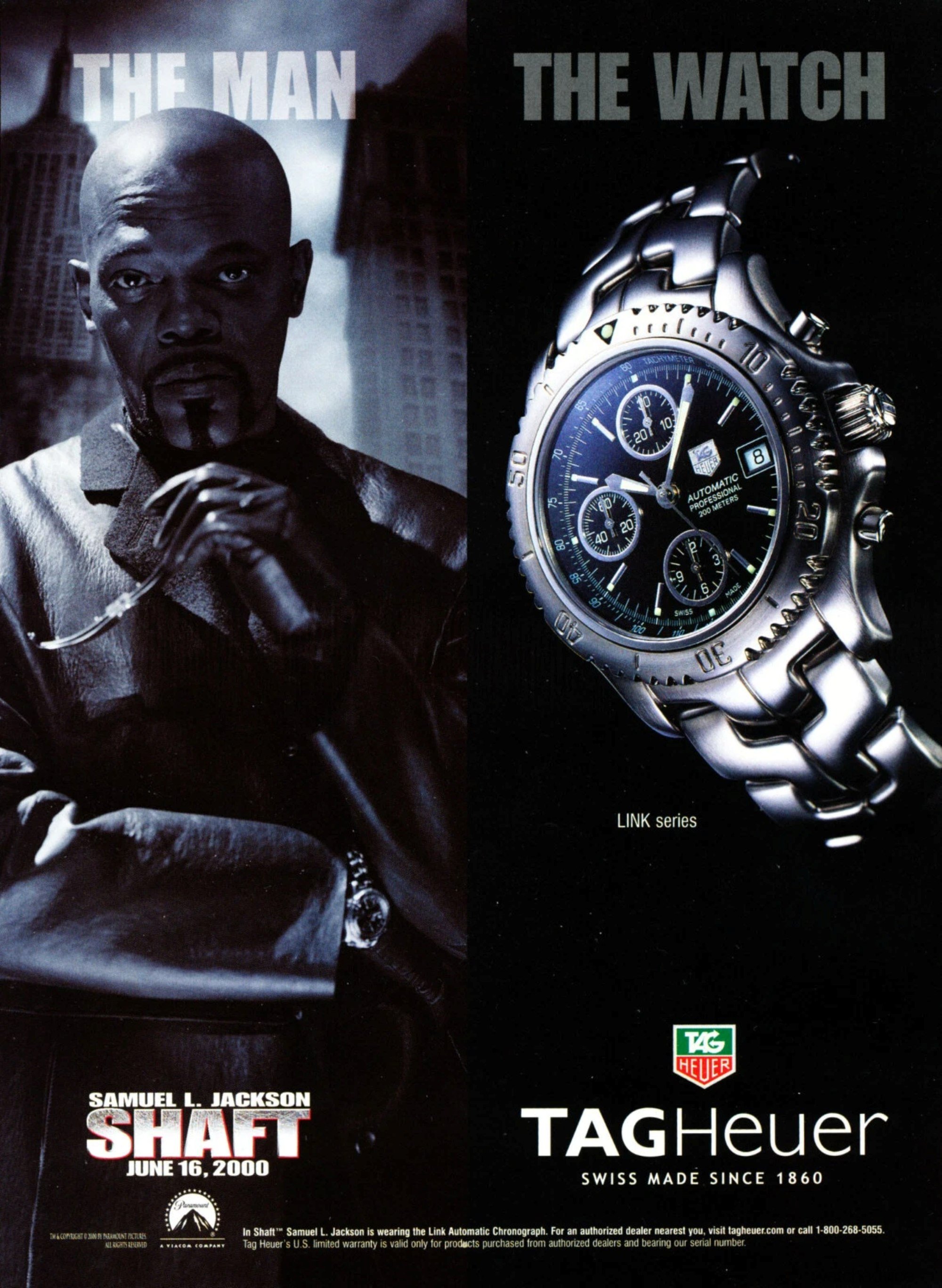
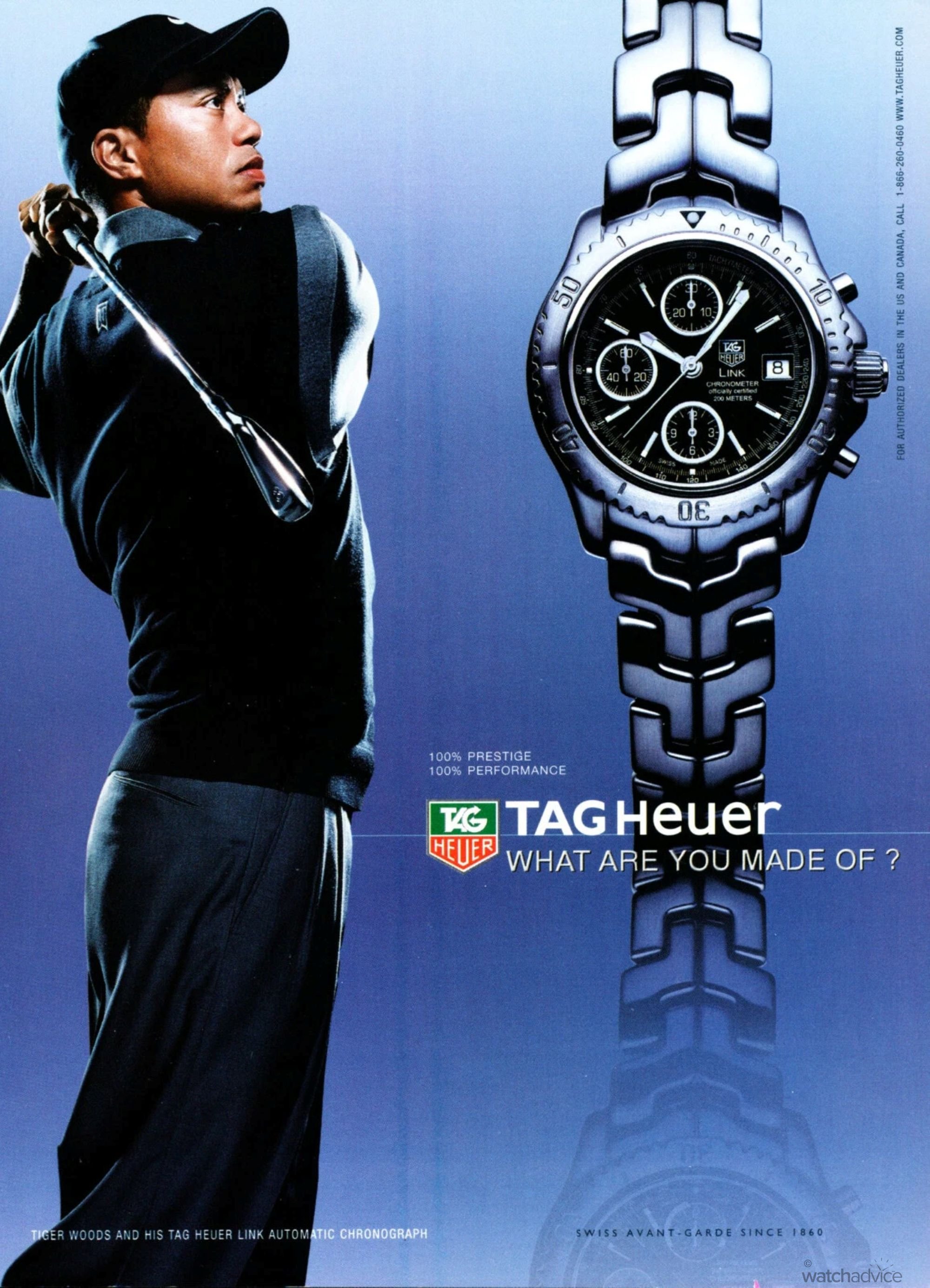
As the 2010s closed, TAG Heuer began to shift direction. Their logo was updated in 2016, and the Carrera and Monaco collections started to gain more traction. However, this renewed focus came at the expense of the Link. Despite proving itself countless times as a capable and popular watch, the Link gradually slipped down the hierarchy as TAG Heuer doubled down on the Carrera, Monaco, Formula One, and Aquaracer collections. One more generation of the Link would come in 2017, but since then scant little has been heard about this unique timepiece.
In The Rear-View
So why has the once-beloved Link – a collection that once paved the way for TAG Heuer – now been left in the rear-view mirror? There are a few reasons, one of which we have already touched on: TAG Heuer’s paradigm shift in the late 2010s and 2020s. The modern identity of the brand is no longer what it once was, having become more tightly defined by its motorsport heritage. This was, overall, a positive move, as TAG Heuer leaned back into the designs and high-performance chronograph technology that old Heuer was so renowned for. In these areas, the Carrera and Monaco had always been central pillars, while the newer Formula One and Aquaracer lines found their place as modern alternatives with their own racing spirit.
However, this change in direction also meant that many of the innovations once integral to the Link’s success were no longer relevant. TAG Heuer’s in-house Heuer 02 (later TH20-00) and other new movements became the brand’s primary focus, while the Calibre 17, the Zenith-derived Calibre 36, and the Calibre S – all of which had found a home in the Link – were gradually cast aside. Against such a backdrop of strong narratives, cutting-edge technical developments, and cultural richness, the Link now had little to stand on.

TAG Heuer Link Calibre S, 2012-2014
Said to be one of the most complex analogue quartz movements of all time, the Calibre S was integrated into the TAG Heuer Link collection. It included a 1/100th second chronograph and even perpetual calendar capabilities, but was discontinued in 2014 as interest in the Link line waned.
This challenge was only exacerbated by the design niche it occupied. The hybrid dress/sports watch subgenre it belonged to was gradually falling out of trend, both within TAG Heuer’s modern line-up and across the wider watch industry. If you were seeking a purpose-driven, rugged sports watch, the Aquaracer was the clear choice. If refined elegance was what you wanted, the three-hand Carrera collection now filled that role. The lines between sports and elegance had been redrawn, and the appeal of a model that was neither one nor the other, but aimed to do both, was rapidly beginning to shrink.
Related Reading: Reviewing The New TAG Heuer Carrera Day-Date
TAG Heuer Link Calibre 17, 2017-2024
Though the redesign of the Link collection showed promise, the chronograph renditions of the fifth generation were discontinued quietly in 2024. This could possibly spell the end of the Link line in the modern catalogue.
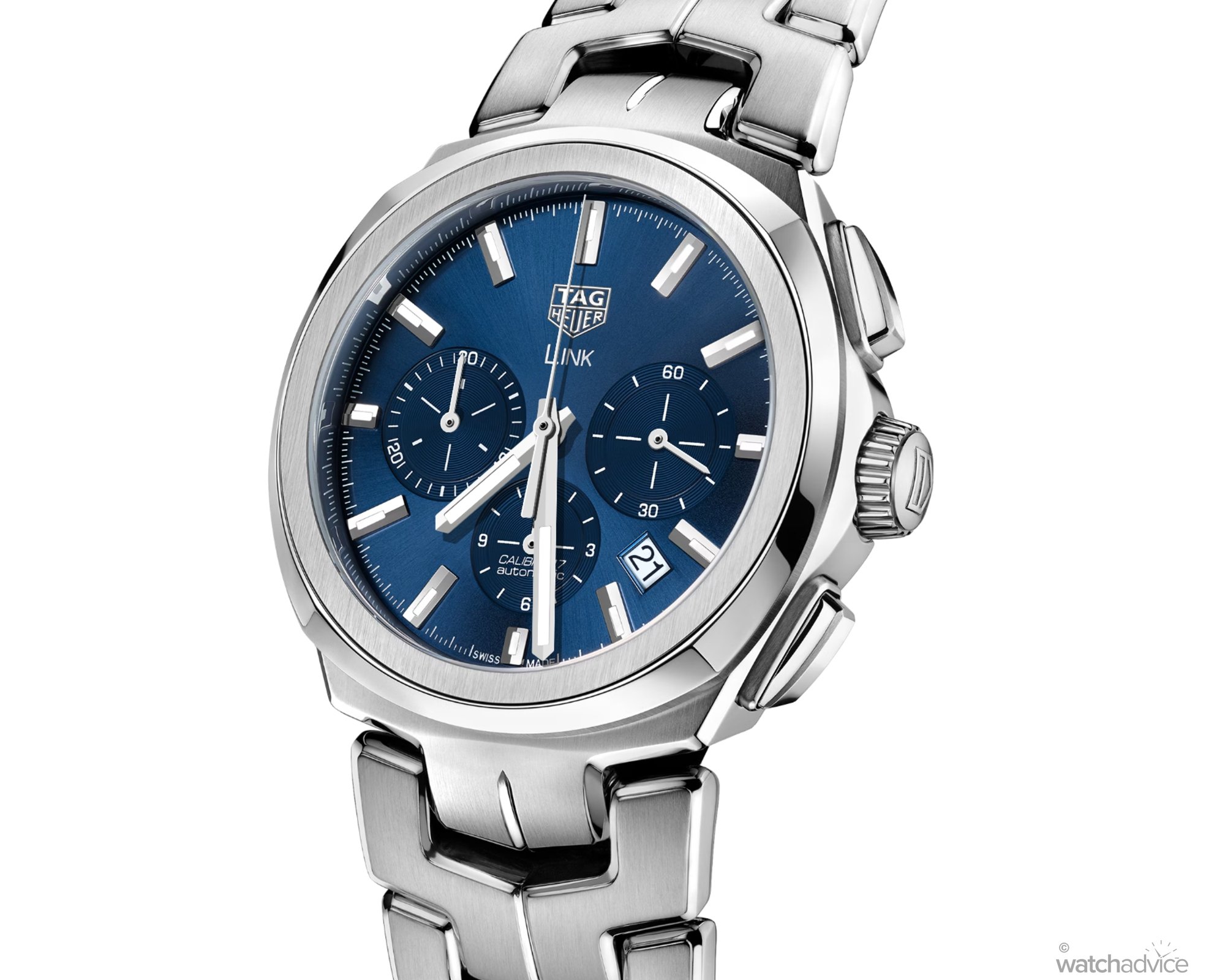
Lastly, the end of the 2010s and the 2020s brought about a massive shift in attitudes towards watch aesthetics. As the world spent time indoors at the turn of the decade, the watch industry experienced a surge in interest unlike anything it had seen since the Quartz Crisis. With this wave of new enthusiasts came new priorities, chief among them a renewed fascination with heritage. Buyers wanted more than just a watch – they wanted history, legacy, and a narrative to connect with before adding their own chapter.
Once again, this worked in modern TAG Heuer’s favour: The Carrera was Jack Heuer’s brainchild, one of the family’s greatest and most enduring contributions to horology; The Monaco was a silver screen icon, its bold and uncompromising silhouette adored by film stars and rebels alike; The Formula One, with its accessibility, became the entry point for countless enthusiasts; And the Aquaracer stood as the perfect blank canvas to display the battle scars of years gone by.
Related Reading: The Legacy Of Iconic Watch Designs — TAG Heuer Monaco
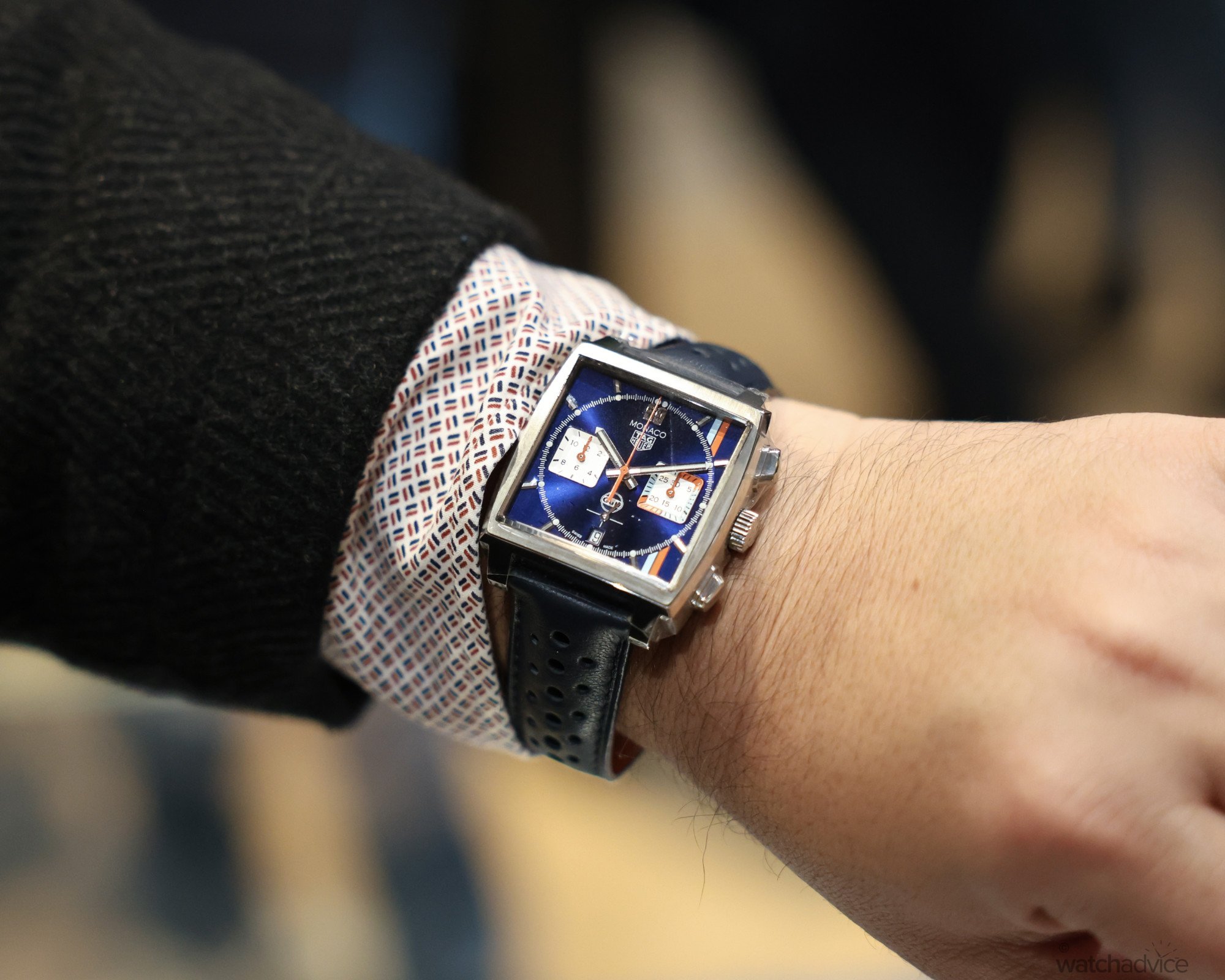
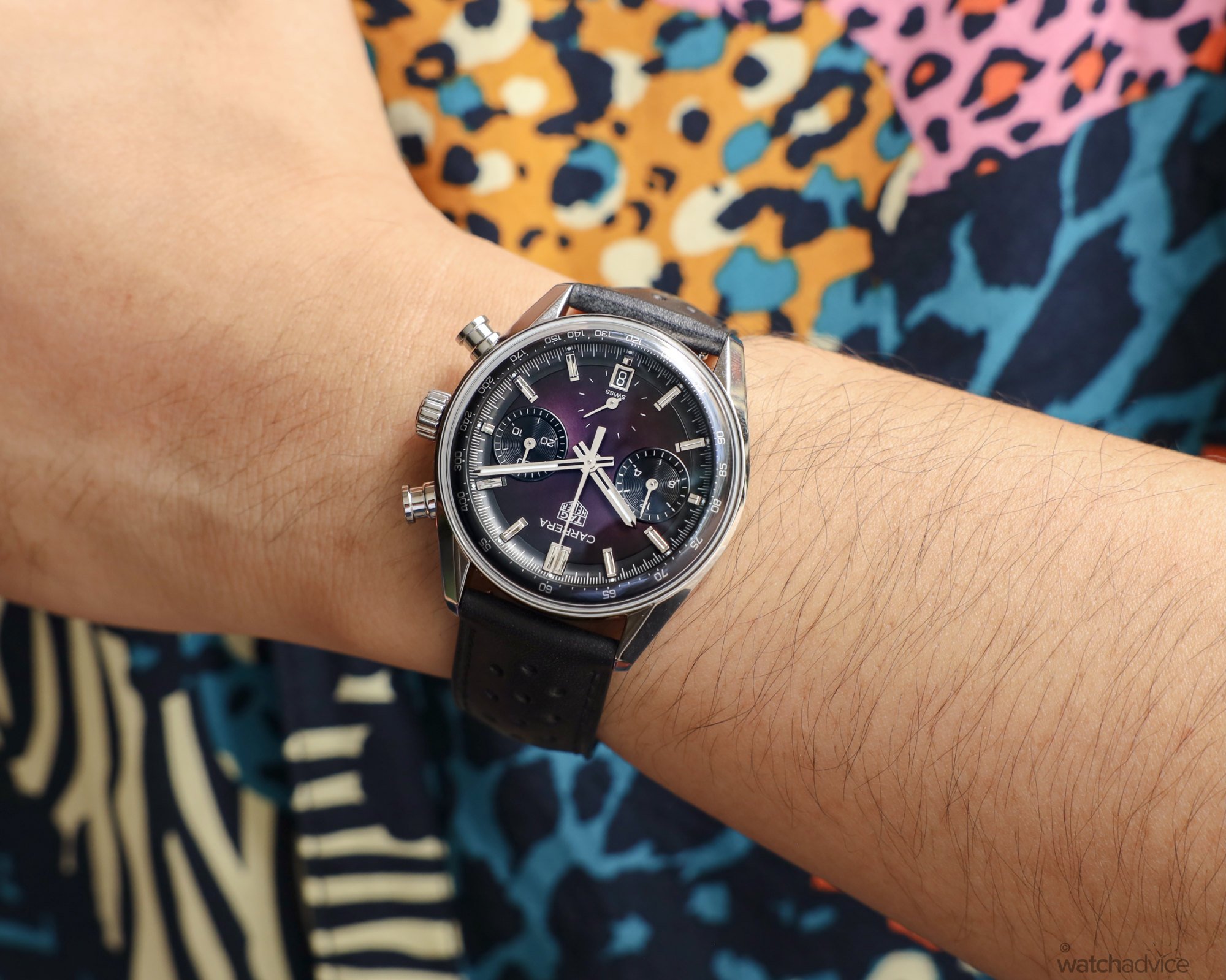
The Link, on the other hand, represented none of these things. It was the jack-of-all-trades but the master of none – the substitute teacher of the TAG Heuer line-up, filling the gap while the industry waited for something else to explode onto the scene. What was once TAG Heuer’s flagship of modern sophistication now feels more like a relic of their transitional dark age. Though not discontinued yet, at least as of this time of writing, the TAG Heuer Link is the last of a dying breed, kept in hibernation and quietly waiting for its rediscovery.
Linked In
Though the future of the TAG Heuer Link may appear grim, it doesn’t have to be. I believe the Link still represents an important chapter in TAG Heuer’s history. Sure, its legacy isn’t defined by the nostalgia-fuelled glamour of the racetrack or by ground-breaking feats of precision timekeeping, but it does represent something TAG Heuer has always championed: design courage. It wasn’t born of racing, nor tied to cinema, but of pure form and function, and still managed to succeed in odds where many others would have failed.
While today we know the Carrera as the cornerstone of the TAG Heuer brand, it wasn’t always that way. As I noted in my Carrera article (don’t be shy – read it!), the collection ceased production for eleven years between 1985 and 1996, leaving the S/El – and later the Link – to carry the mantle while TAG Heuer restructured. To its credit, it did just that, playing a crucial role in keeping the brand competitive and compelling until the Carrera was brought back to the light. With that in mind, the Link certainly deserves its flowers in a small revival. Perhaps not as an icon of another industry, but as the unsung hero of TAG Heuer’s own. To that end, allow me to speculate on potential avenues on how that could unfold.
Related Reading: The Legacy Of Iconic Watch Designs – TAG Heuer Carrera
Perhaps the most effective way to bring the Link back into the limelight is to fully embrace its dressier potential. While the original S/El and subsequent Link models were designed to straddle the line between sport and elegance, leaning fully into the dress watch aesthetic could transform the collection into TAG Heuer’s secret weapon.
This wouldn’t require a massive standalone launch; The brand isn’t traditionally known for refined dress timepieces. Instead, a thoughtful update to the fifth-generation Link could suffice. Think svelte, slender case dimensions paired with TAG Heuer’s signature innovative stamp. Titanium, ceramic, gold, or even two-tone options could highlight the Link’s unique combination of luxury and versatility. Executed well, such models could give other integrated-bracelet watches a run for their money, whilst positioning the Link as a compelling choice for the modern executive — recognisable, refined, and unmistakably TAG Heuer.
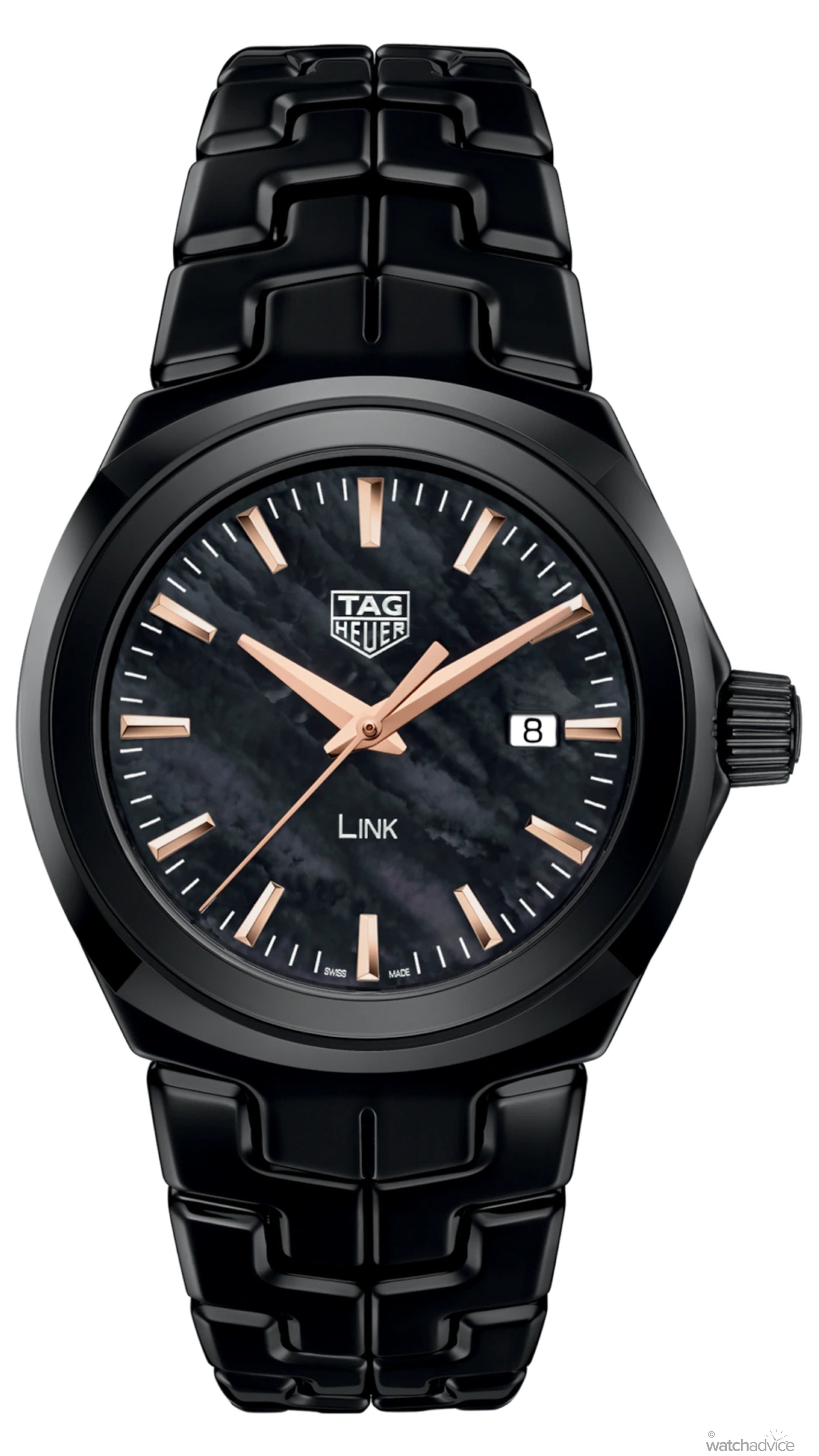
TAG Heuer Lady Link Black Ceramic 32mm, 2020
Experimenting with ceramic materials isn’t outside the realm of possibility for TAG Heuer. Take, for example, this Lady Link – Bringing this back in a dress watch capacity for both genders could be a compelling call to action back to the Link collection.
If TAG Heuer wanted to truly reclaim the Link’s boldness, another avenue would be to treat the collection as a playground for horological experimentation. And no, not the era in the ’80s when the brand greenlit far too many designs, but experimentation in the realm of haute horlogerie. TAG Heuer’s modern mission has been to reposition itself as a high-end watchmaker, particularly in the chronograph space — a goal it has clearly achieved. Now, with that territory firmly re-established, why not have a little fun?
The Link line offers ample opportunities for innovation that were once only dreams. Imagine a standalone tourbillon model or an extremely rare and romantic TAG Heuer moonphase — complications that would showcase the brand’s technical prowess while staying true to the Link’s design language. Execution, of course, would need careful consideration to avoid venturing into the overtly experimental territory of sister brand Hublot. Yet with watchmaking legend Caroline Forrestier-Kasapi at the helm of the movement division, I’d like to believe she would welcome the challenge.
TAG Heuer x Hodinkee Carrera Seafarer Chronograph, 2024
A moonphase complication in the TAG Heuer Link line wouldn’t be out of the question, either. The brand has already proven that they can integrate a tideograph complication into their TH20-00 movement, which is functionally similar to a moonphase.
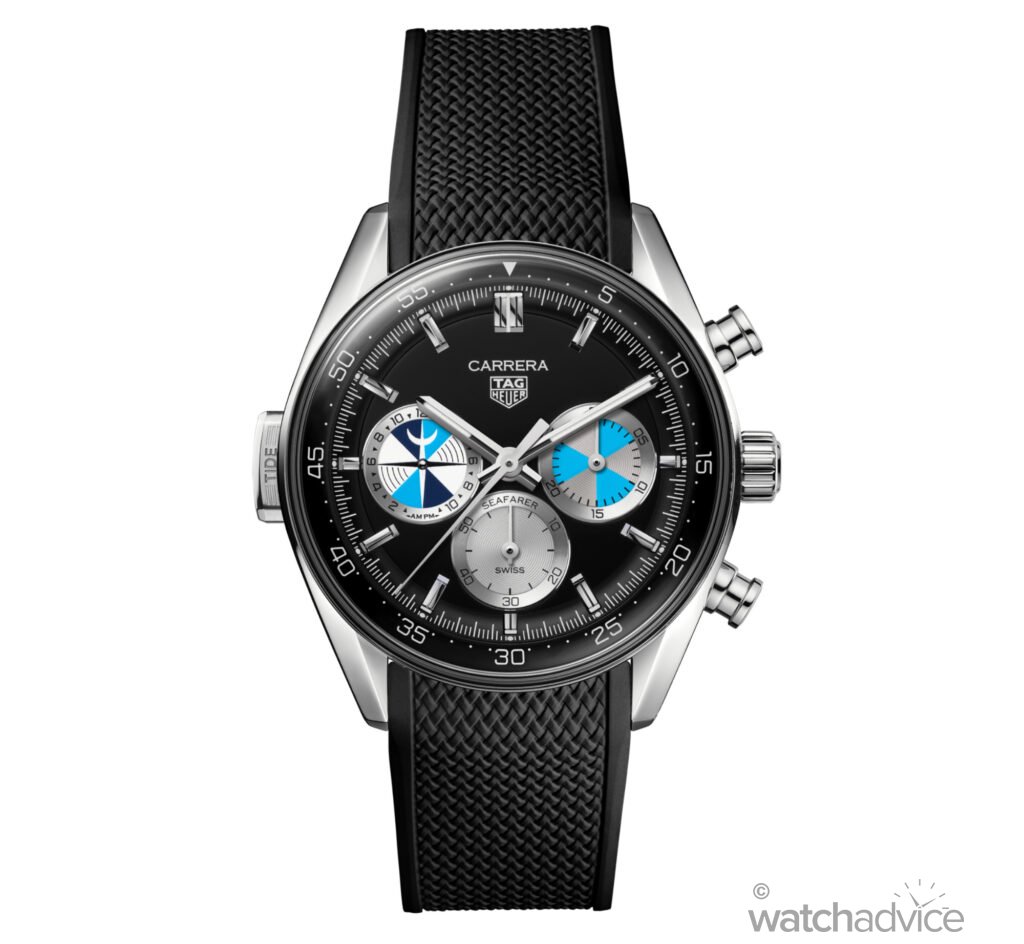
Related Reading: In-Person — With Carole Forestier-Kasapi, & A Year In Review With TAG Heuer
Of course, with modern watchmaking attitudes, everyone loves a comeback. To that end, countless hours spent trolling TAG Heuer forums and blogs have convinced me that the Link’s historical references are due for a modern do-over. I don’t foresee a future for some of the more polarising models of the time — especially the incredible but frustratingly complex Calibre S — but there are certain timepieces within the S/El and Link lines that I would love to see welcomed back.
One of these is obvious: Ayrton Senna’s S/El Split-Seconds Chronograph. While it doesn’t need to be a completely faithful remaster of the Ana-Digi oddity, TAG Heuer’s tributes to the Brazilian Formula One driver have been red-hot in the past. A limited line of split-second pieces, perhaps even outfitted with the ultra-exclusive TH81-00 rattrapante movement, could draw a massive amount of attention back to the wayward collection.

TAG Heuer S/El Ref. S25.706C Split-Seconds Chronograph, 1989
A return of this legendary S/El watch but outfitted with all the modern fixings, if done right, could absolutely set the watch world on fire.
Related Reading: The New TAG Heuer Monaco Split-Seconds Chronograph Is Ready For Racing!
The other piece I would personally love to see revived is one you may not have even heard about: the Link Lady Diamond Star. Originally created for Cameron Diaz during her time as a TAG Heuer ambassador, this model is unlike anything I’ve ever seen before or since. Featuring a transparent periphery with a decorated automatic movement circling the case, it occupied a space that literally no other TAG Heuer timepiece has touched since — territory usually dominated by brands like Chopard or Piaget. Very little information about this watch can be found; even locating the image took hours of digging.
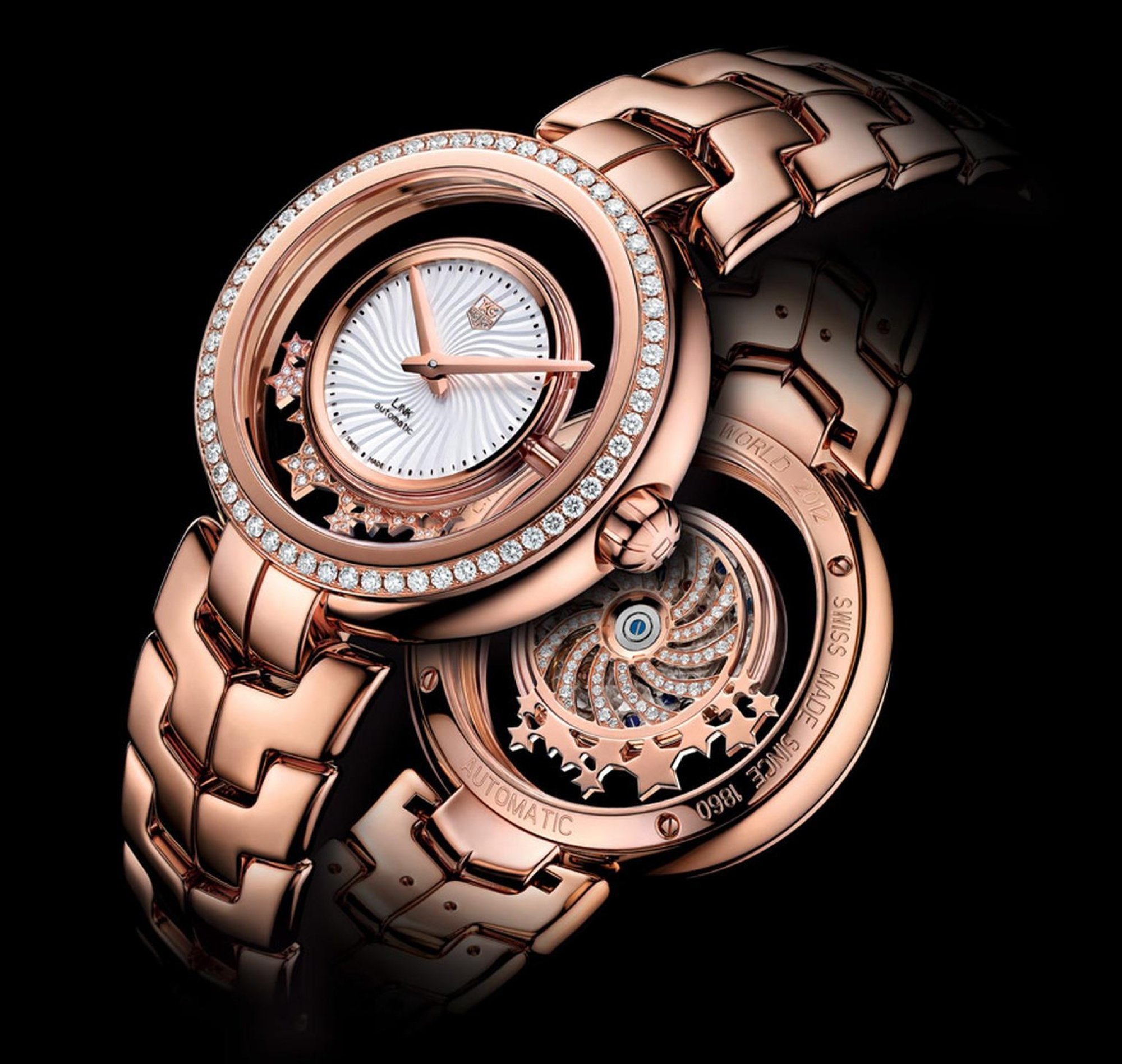
TAG Heuer Link Lady Diamond Star, 2010s
Originally made for Cameron Diaz when she became ambassador for TAG Heuer, this Link model makes use of a see-through periphery and an enlarged rotor decorated with diamond stars. This piece alone showcases the inventiveness and creative opportunities that run rife within the Link collection.
Though neither the S/El Split Seconds nor Diamond Star models need to become commonplace overnight — especially if a significant amount of time and money goes into them — their announcements alone could still shake the watch world in a way few other releases could.
Final Thoughts
The history of the TAG Heuer Link, relative to the rest of the brand’s catalogue, is little known but surprisingly compelling. Unlike any other watch in the collection, it was born not from heritage, but a commitment to evocative and innovative design. While it may lack the fairy-tale narratives that connect other models to history, this underdog of horology has contributed far more to TAG Heuer than most will ever realise.
During its tenure, the Link truly lived up to its name, bridging the gap between two very different eras of the brand. Much like Hodor holding the door to save Bran Stark, or Samwise Gamgee carrying Frodo to the top of Mount Doom, the Link stood out as a crucial figure in a period of uncertainty for TAG Heuer.
But the story of the Link has not ended yet. TAG Heuer has the potential to pull off a minor miracle with a revival of the collection. It already showed promise with improvements made in 2017, but there is an entire road of opportunities ahead for the Link to be pushed further than before. From refining its dressier capabilities to remastering iconic designs, the Link collection is a canvas from which endless possibilities can be crafted.
If TAG Heuer were to honour the Link’s history whilst utilising their very best innovations, the Link can once again be a bridge within the brand’s catalogue. But this time, it’s not between sports and elegance, or between two different decades. Instead, it can become the link between TAG Heuer’s own past, present, and future.
This article was written as part of a commercial partnership with TAG Heuer. Watch Advice has commercial partners that work with us, however, we will never alter our editorial opinion on these pieces, a fact that is clearly communicated to the brands when entering into a commercial arrangement.



